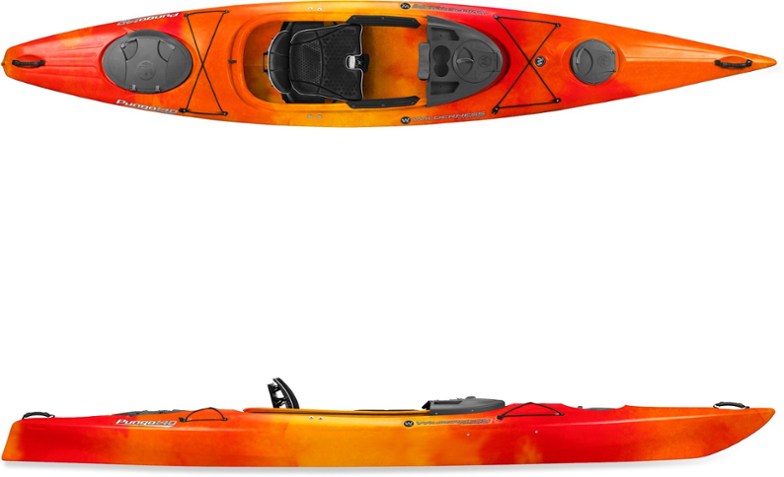I took my second kayak class today from REI. It was called Kayak Rescues and Recoveries and basically involved working with a skirt that goes around the coaming (cockpit lip) and seals you in while sealing out water, waves, etc. It was a more serious class than the last one in that we intentionally overturned our kayaks in order to “simulate” an accident or problem.
Again one of our instructors was Uma from my last class and then a new one, Joe who as the humorous rumor goes, lives in the boat house at Saganashkee Slough. Actually he said he just lives near there, is involved with running the boat house and spends a lot of his time there. If lived that close I probably would too. Both did a great job!
We started with “T” assisted rescues and then moved to self rescues before making a hasty return to shore with the appearance of an approaching storm. We each intentionally dumped our kayak over, had to remove our skirt under water, slip out, return to the surface, then gather up your paddle, kayak, etc. and meet up with your partner who would then help raise and empty it before flipping over and bracing it so you could climb back in. The self rescue was similar but you had to do it on your own with the aid of paddle float.
First time in I got a nice nose full of water (yeah, that was pleasant, not) and even though I knew what to expect it was still a bit of a shock, especially as the water was murky enough as to not allow you to see what you were doing. Fumbling upside down while holding your breath is not the most fun experience. Regardless within 5 seconds I made it to the surface. The second attempt was better and the self rescue was even better in that I was up in under three. The down side was that I scraped my shins on the inside edge of the coaming as I was extricating myself the first two times. The third I had a better technique and didn’t scrape.
This injury tells me (along with the fact I had to more or less sit on the deck to get my knees in which is somewhat unstable) that the cockpit wasn’t large enough for my size or at least my comfort. For me I found this very good (other than the scraped shins) as it will help me in determining the size of the cockpit on my kayak.
We were in Wilderness Systems brand kayak again. This time I believe it was a Tsunami 145 (14′ 6″ in length) which has a 35.75″ cockpit length. With the seat back position, when seated this leaves about 30″ to work with and given my 6’2″ frame, there simply wasn’t enough room to bend my knees in the seated position to get in.
For reference, the Pungo 140 I had last time has a 57 1/2″ cockpit length. (according to my tape measure). It was basically open down to mid shin.
So I need to find a happy medium. I don’t want the really big 57 1/2″ but 36″ (30″) apparently isn’t enough. I’ll have to do a bit more investigating and measuring but I’m thinking something in the 42″-45″ size will probably fit me well. My final class is in a few weeks and I’m at least a few months from even needing to finalize the coaming size as I’m still picking out wood let alone actually starting the build. Of course I’ll need to find a skirt that fits or work with one of the companies that makes them custom if there isn’t a stock size I can use.





